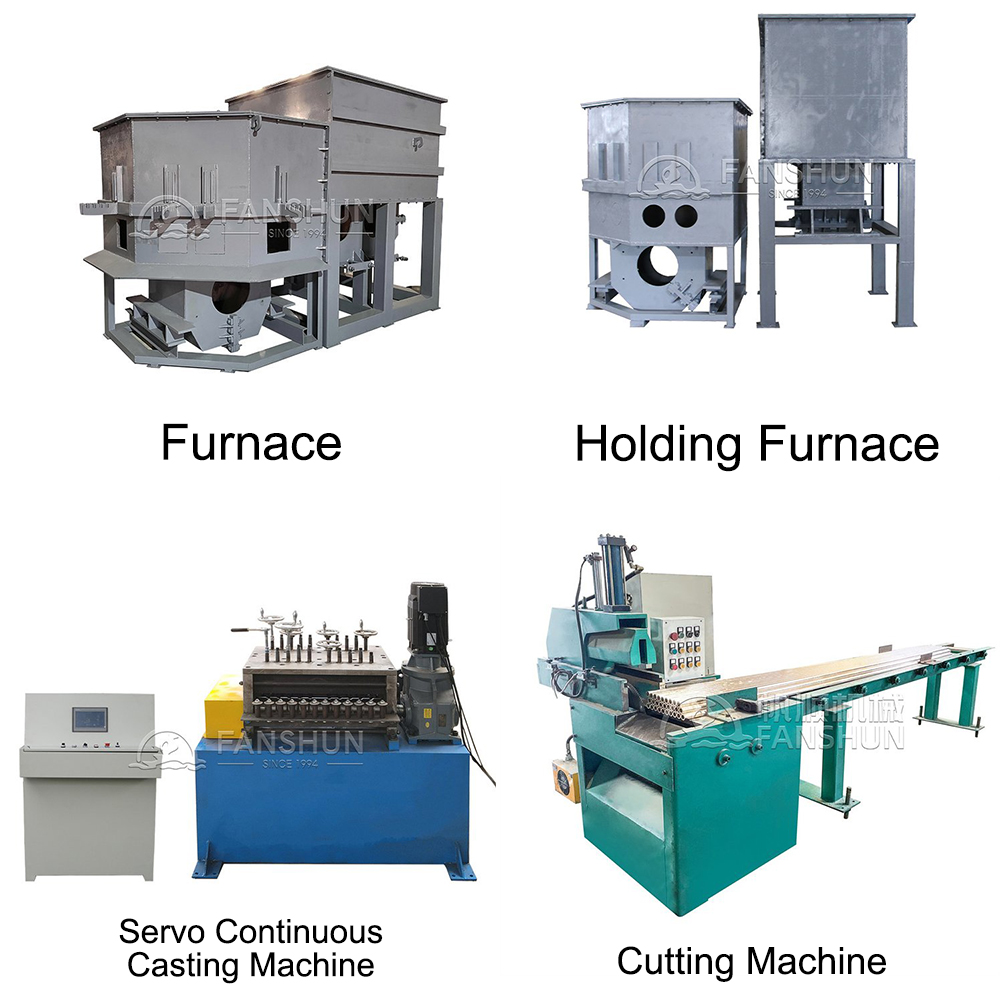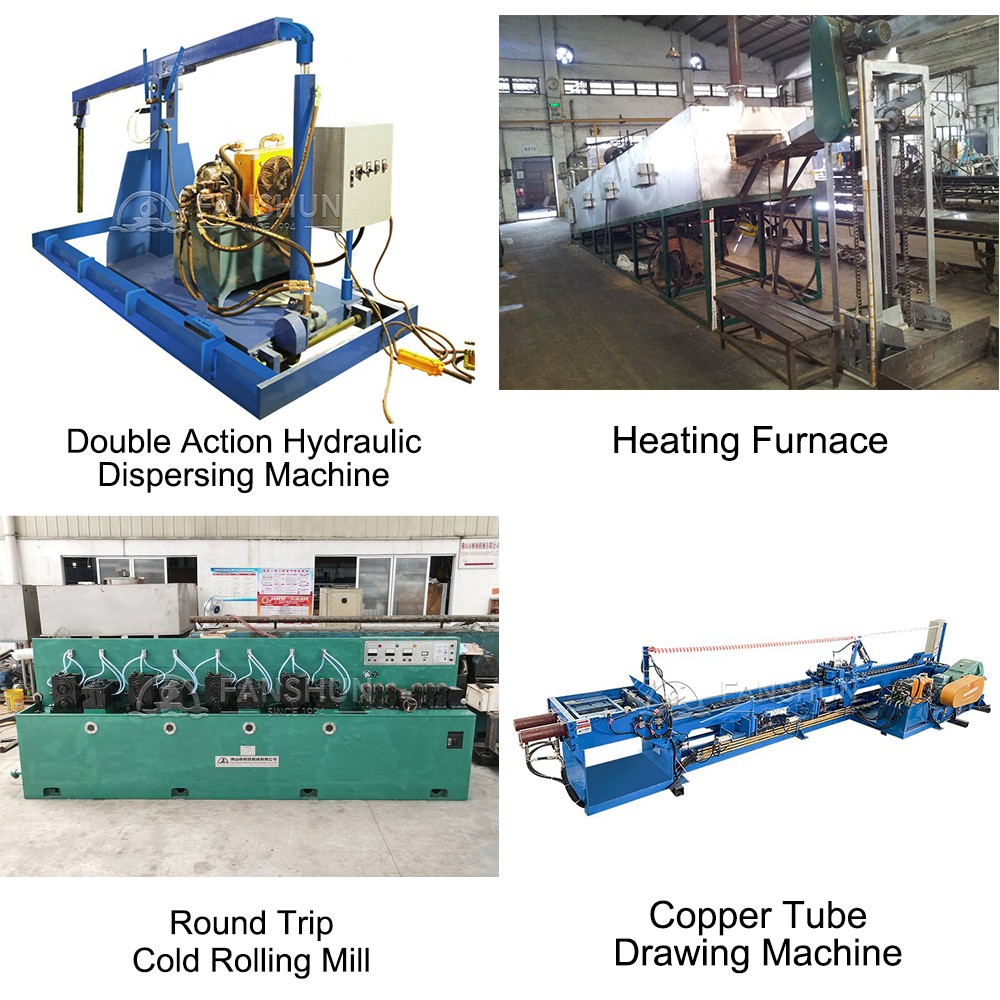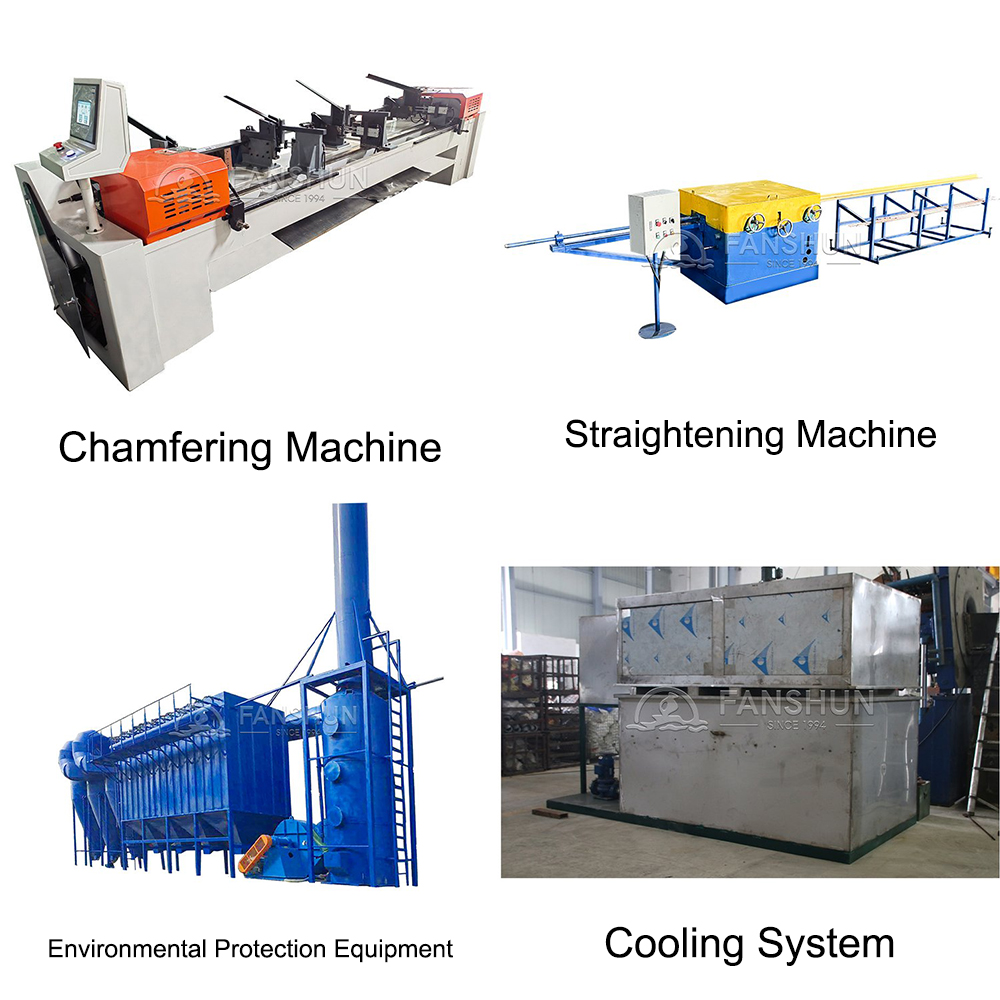Copper pipes are divided into two main series: brass pipes and copper pipes. The production process of copper pipe billets includes three methods: horizontal continuous casting, upward casting, and casting copper ingots followed by extrusion. For copper pipes, raw materials for purple copper pipes can be either cathode electrolytic copper or recycled copper scrap. They undergo processes of melting, insulation, continuous casting to produce billets, and then proceed with rolling, drawing, annealing, drawing again, and coiling (or straight pipe) production process. For brass pipes, raw materials can be cathode electrolytic copper plates with zinc ingots or recycled copper scrap. After melting (with composition adjustment) and testing to meet standards, the materials proceed to insulation, continuous casting to produce billets, and then undergo rolling (heating extrusion molding), drawing, annealing, pickling (surface oxide skin removal), drawing again, and finally straightening to achieve the finished product. |
In the industrial landscape, the production of copper and brass components relies on a sophisticated chain of processes.Beginning with Copper ore extraction, raw materials are procured to fuel the creation of copper pipe and brass pipe, essential commodities in various sectors. Copper ore extraction refers to the process of obtaining copper from its ores. The history of copper ore extraction dates back thousands of yearsCopper ore extraction brings about a range of benefits copper ore extraction is a complex industrial process that requires various stages of mining, crushing, concentration, smelting, and refining to produce pure copper metal for use in various industries.A copper pipe is a cylindrical tube made from copper metal, typically with a smooth surface and uniform diameter.Brass pipe, distinguished by its alloy composition of copper and zinc, is a versatile conduit frequently employed in plumbing systems for its durability and resistance to corrosion, making brass pipe a preferred choice in various industrial and residential applications.A copper pipe used in plumbing systems due to its excellent thermal conductivity and corrosion resistance properties. The Brass ingot furnace assumes a pivotal role in this journey, meticulously melting brass ingots to yield the molten brass required for fabrication. The Brass bar continuous casting machine typically consists of a series of interconnected components.Meanwhile, The Brass bar continuous casting machine is a specialized industrial equipment designed,the Brass bar continuous casting machine ensures the seamless and efficient casting of brass bars, maintaining consistency and quality throughout production.This intricate interplay of copper and brass materials underscores the backbone of numerous industries, from plumbing to engineering, ensuring reliability and versatility in a multitude of applications. |
3D Animation Preview

| More information about the 3D animation,please "contact us". |
Project Reference Equipment Configuration
| Furnace | Holding Furnace | Servo Continuous Casting Machine | Cutting Machine | Double Action Hydraulic Dispersing Machine | Heating Furnace |
| 75Kw | 75Kw | 4 Kw Single Bar | Single Bar | 1000T | Natura Gas |
| Round Trip Cold Rolling Mill | Copper Tube Drawing Machine | Chamfering Machine | Straightening Machine | Environmental Protection Equipment | Cooling System |
| √ | 10T 12m 1 unit | √ | √ | 144# | Volumn:30T Water Storage:10T |
| (Please refer to the above equipment configuration for process flow.) |
Equipment Configuration Reference


